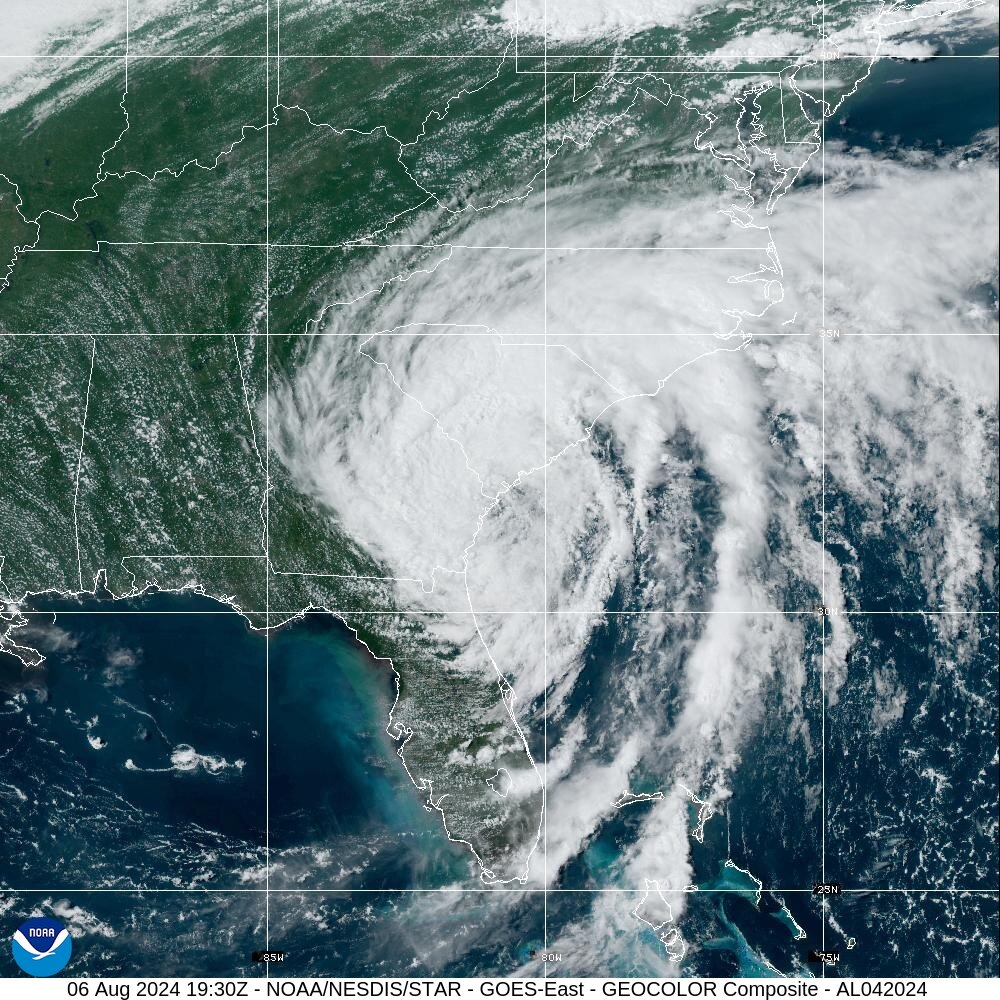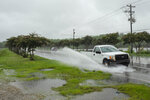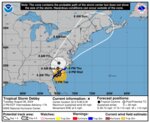Floodwaters may flow in South Carolina long after Debby is gone, McMaster says
kayla@theitem.com
Sumter saw its first flash flood warning activate Tuesday midday, but forecasts and state officials continue to emphasize the worst of the slow-moving, low-wind, heavy rain Tropical Storm Debby will be felt later this week, even up to two weeks after the storm moves on.
Debby’s wind field has increased, according to the S.C. Emergency Management Division, with tropical storm-force winds now covering most of coastal South Carolina. Debby is expected to move slowly along, off the coast before making a second landfall as a tropical storm Wednesday night evening or Thursday morning somewhere in northern South Carolina or southern North Carolina and heading north.
This is not a storm of damaging winds, officials reiterated Tuesday during a media briefing. It is a storm of rain, which is expected to cause flooding as well as downed trees and power lines from oversaturated soil.
Sumter’s flash flood warning was first set to expire at 3:30 p.m. and is now extended to 5:30 p.m.
Gov. Henry McMaster urged people not to drive or walk around barricades.
“Competent people decided to put that barricade there for a reason. Don’t drive around it,” he said.
With forecasters predicting 10-15 inches of rain in rural areas of northern South Carolina, floodwaters could take up to two weeks to reach the ocean.
No deaths or injuries have been reported in South Carolina since the state started seeing an impact Monday, though Debby has been blamed for at least five deaths in other states. It made initial landfall as a Category 1 storm in the Big Bend of Florida and veered toward Savannah, Georgia.
National Weather Service Warning Coordination Meteorologist John Quagliariello said the highest wind gust recorded so far was 63 miles per hour in Folly Beach and that tornadoes have likely occurred along the coast.
He said the largest area of concern for flooding rivers is along the Pee Dee basin.
Personnel from across state and federal agencies are either already responding to incidents or poised to, officials said.
S.C. Department of Transportation Secretary Justin Powell said Tuesday that, as of noon, 48 state-maintained roads, primarily in the Lowcountry, are closed from flooding but that “that number will be fluid as we go through this event.”
“All major interstates are open, but SCDOT is actively monitoring conditions, especially on Interstate 95 where several ramps are closed because of standing water,” he said.
S.C. Department of Environmental Services Interim Director Myra Reese said one unregulated dam breached and flows to Black Creek near Walterboro. The Associated Press reported an apartment complex flooded and some roads were blocked by standing water or fallen trees, but no major damage was reported. Reese said the state regulates 2,400 dams, and there are about 40,00 dams across South Carolina.
She said once the rain stops, it may be tempting for children to play in standing water around the house, but Reese warned that floodwater, even receded, may contain bacteria and chemicals from urban runoff.
Santee Cooper began controlled spill operations at Santee Cooper Dam Tuesday morning.
Increased rainfall in the Santee Cooper watershed and upstream lake operations has resulted in increased inflows into the Santee Cooper Lake system. Due to elevated lake levels, the St. Stephen hydro units have been operating around the clock since Aug. 3. Santee Cooper anticipated yesterday it would begin spill operations at 8 a.m. on Tuesday, Aug. 6.
The flow began at a rate of 10,000 cubic feet of water per second (or about 4.48 million gallons per minute) into the Santee River to keep lake levels below the FERC operating license maximum elevation. The operation will continue until further notice, according to a news release.
System Operations will continue to monitor rainfall projections and inflows into the Santee Cooper Lake system and provide updates as conditions change.
Santee Cooper’s dams and dikes are secure, the release stated, adding that spilling is a normal part of Santee Cooper’s hydroelectric operations in periods of increased inflows into the lakes.
There are currently 85 citizens in 11 shelters, 81 of whom are in Charleston County.
-----
STATE HOTLINE AND INFORMATION NUMBERS AND LINKS
- S.C. Emergency Management Division website: https://www.scemd.org/
- S.C. Emergency Management Division public information phone system: 1-866-246-0133
- For questions about dams, call the S.C. Department of Environmental Services public information phone system: 1-888-246-0133
- Ongoing updates about conditions of state-maintained roads are available at this link.
- Real-time road information is available at 511sc.org.
More Articles to Read






